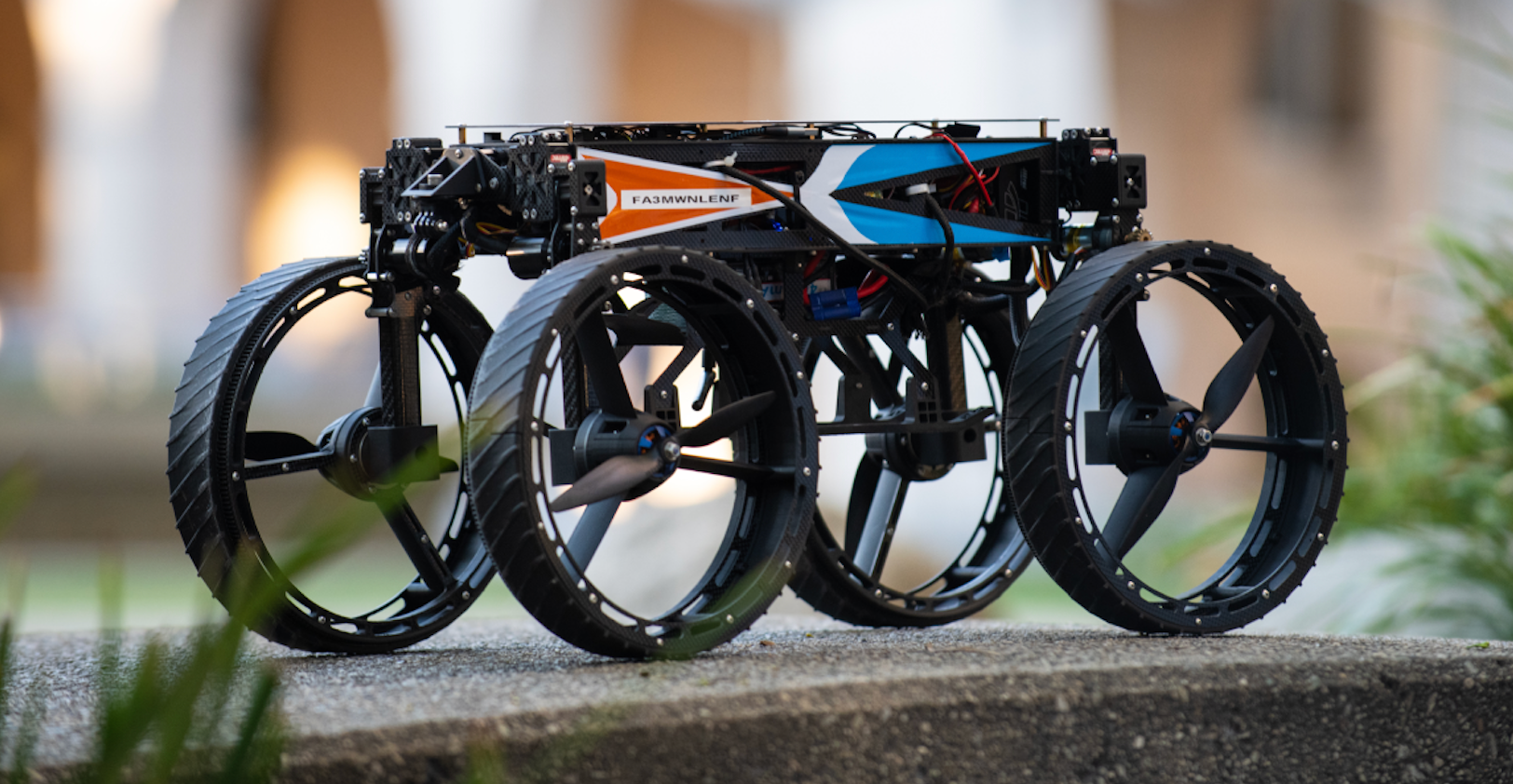Scientists unveil shape-changing ‘morphobot’ that can walk, drive, and fly
Robot performs different modes of movement inspired by animals like birds, meercats, and seal

Scientists have designed a new robot nicknamed “morphobot” that can travel on different terrains, including land and air by shapeshifting its parts into wheels, propellers, or legs as required.
Researchers, including Alireza Ramezani from Northeastern University in the US, say the morphobot can transform its shape to navigate the environment by flying, rolling, crawling, crouching, balancing, and tumbling.
Several animals have adapted the use of their limbs to allow them to tackle different terrains.
Sea lions, for instance, walk on land using their flippers that they also use to swim, and meerkats use their hindlimbs to scout their surroundings.
Chukar birds have also shown adaptations to use their wings to walk on all fours up steep inclines.
Similarly, the morphobot, described this week in the journal Nature Communications, performs different modes of movement inspired by animals like birds, meerkats, and seals by mimicking the animals’ limb repurposing abilities.
The robot, which weighs 6kg (13lb), has four legs each comprising two joints, along with ducted fans fixed at the leg ends.
It spans 70cm in length and has a width and height of 35cm.
The new study shows that the morphobot’s fans can shapeshift to function either as legs, propellor thrusters, or wheels as required.
The robot has demonstrated the ability to alter its movements to walk on rough terrain, traverse steep slopes, tumble over large obstacles, fly to higher levels, and crawl under low-ceiling pathways.
Based on the study, researchers say future mobile robots can be designed with multi-functional limbs to navigate complex terrains by adapting their movement strategies.
The new innovation could help further improve the design of robots to traverse harsh environments, such as those used in search and rescue responses after natural disasters, space exploration, and automated package delivery.
The findings, according to scientists, demonstrate the advantages of designing robots with multipurpose appendages that can be used to travel over varied and challenging terrains.



Join our commenting forum
Join thought-provoking conversations, follow other Independent readers and see their replies
0Comments